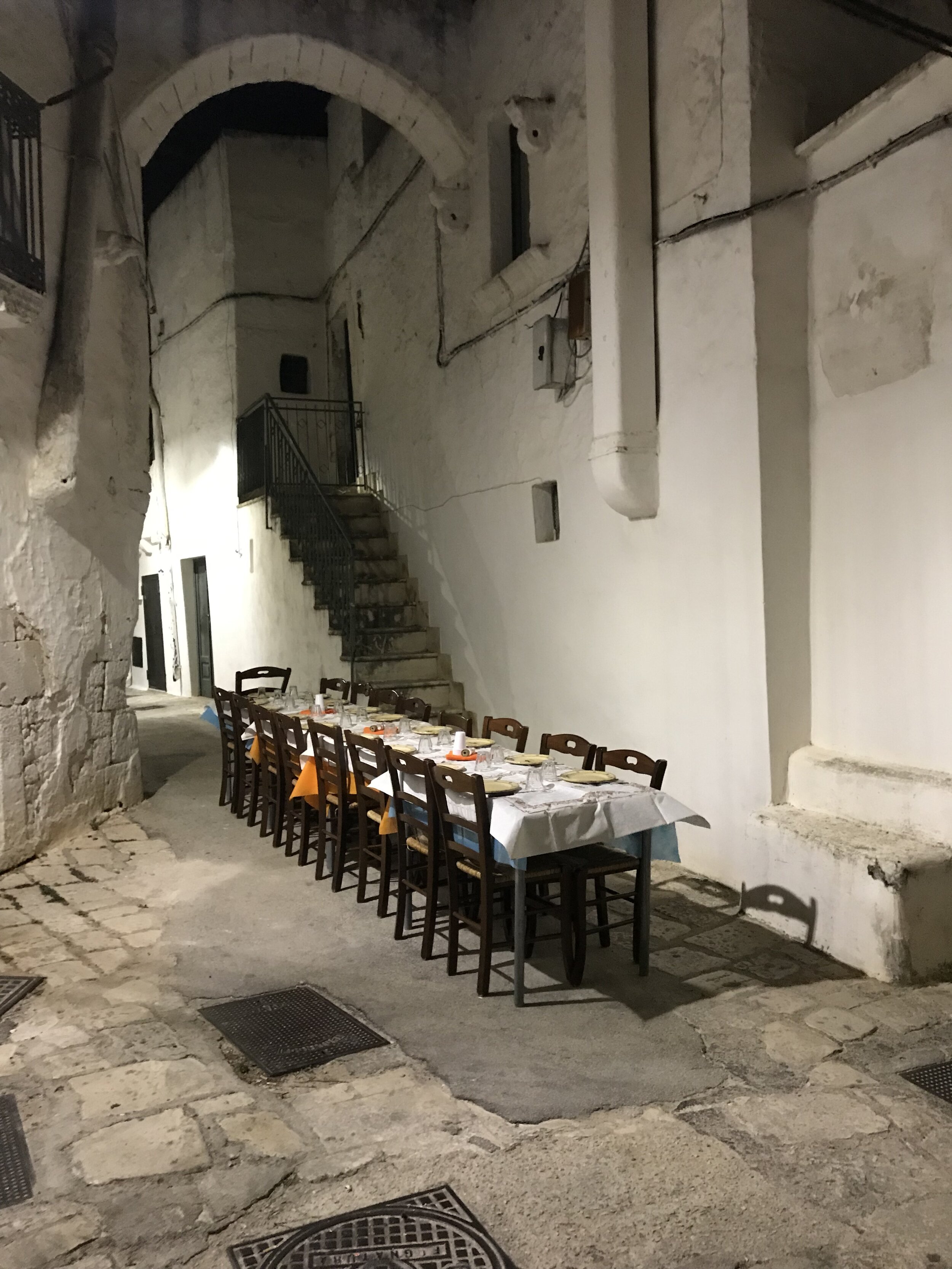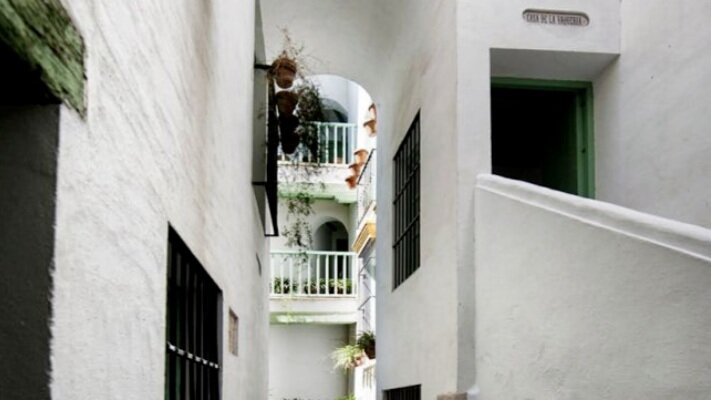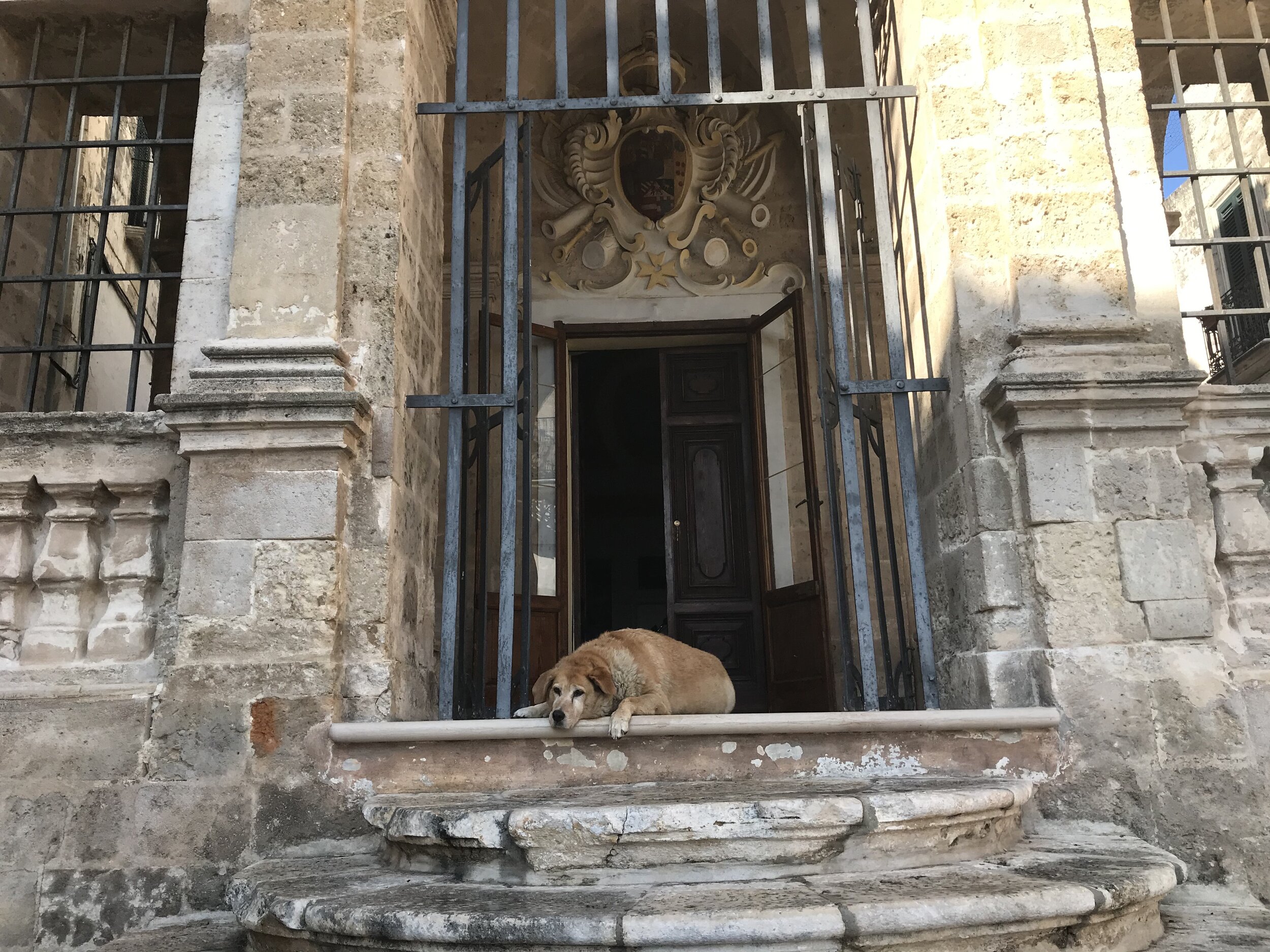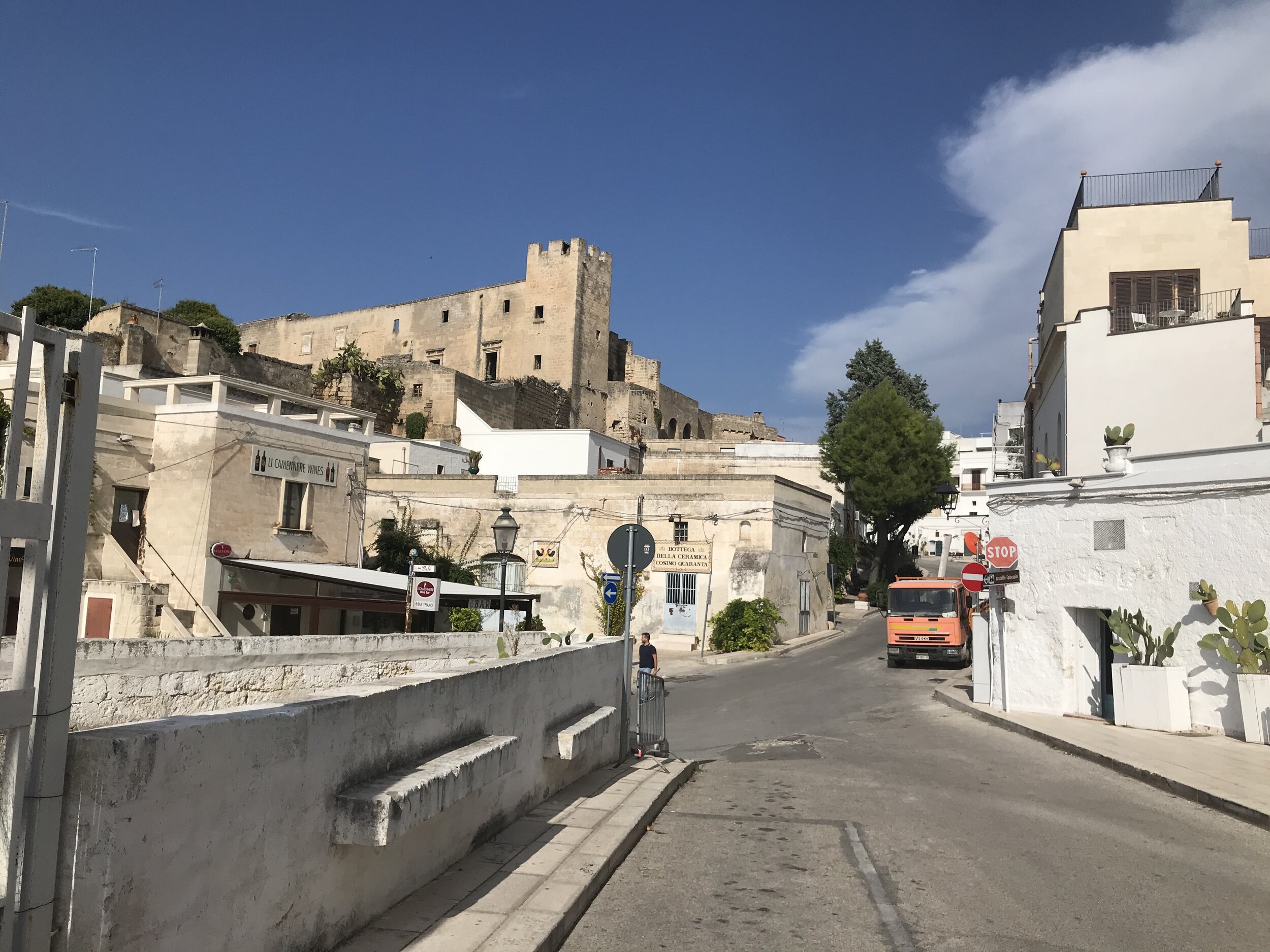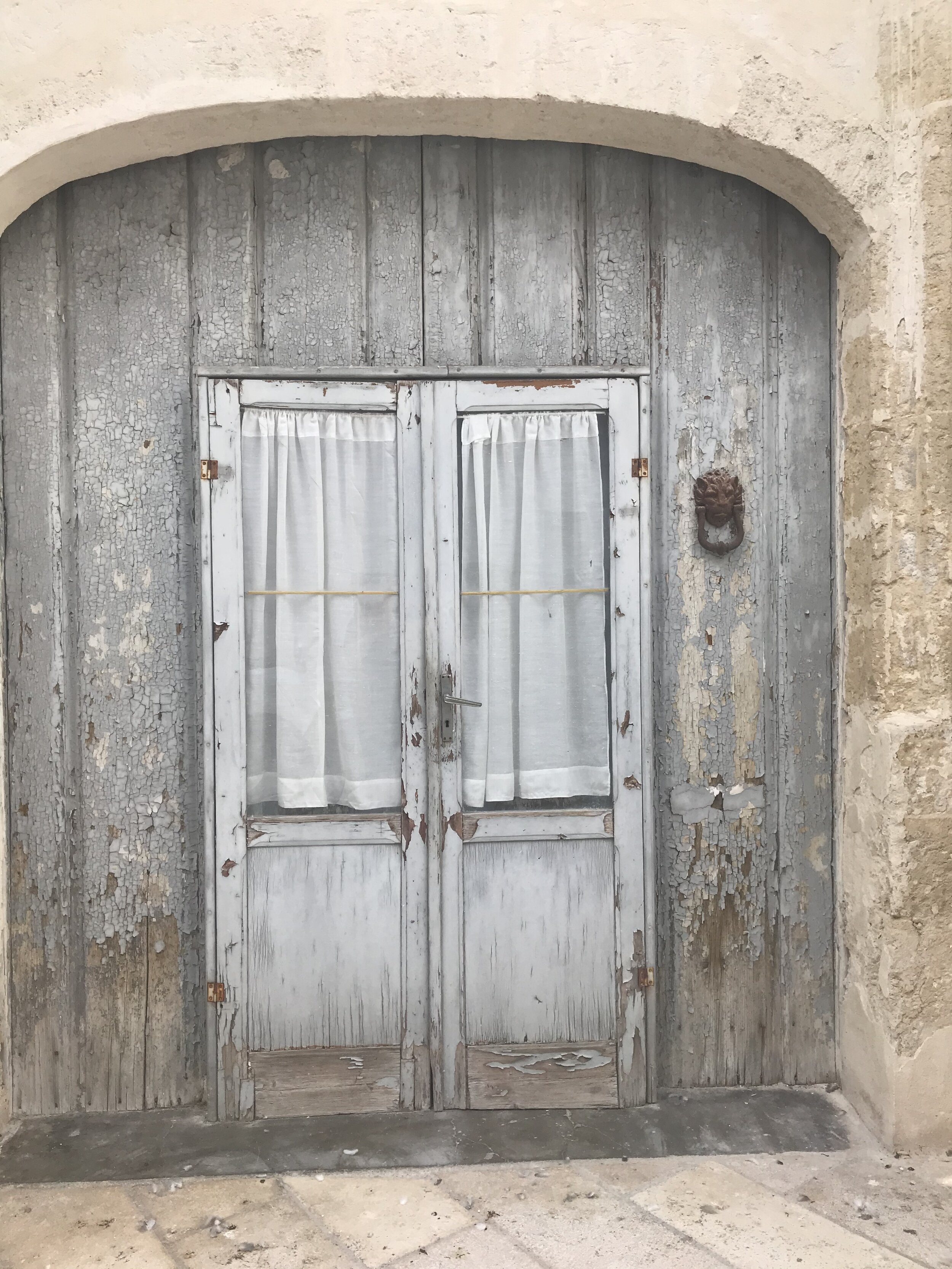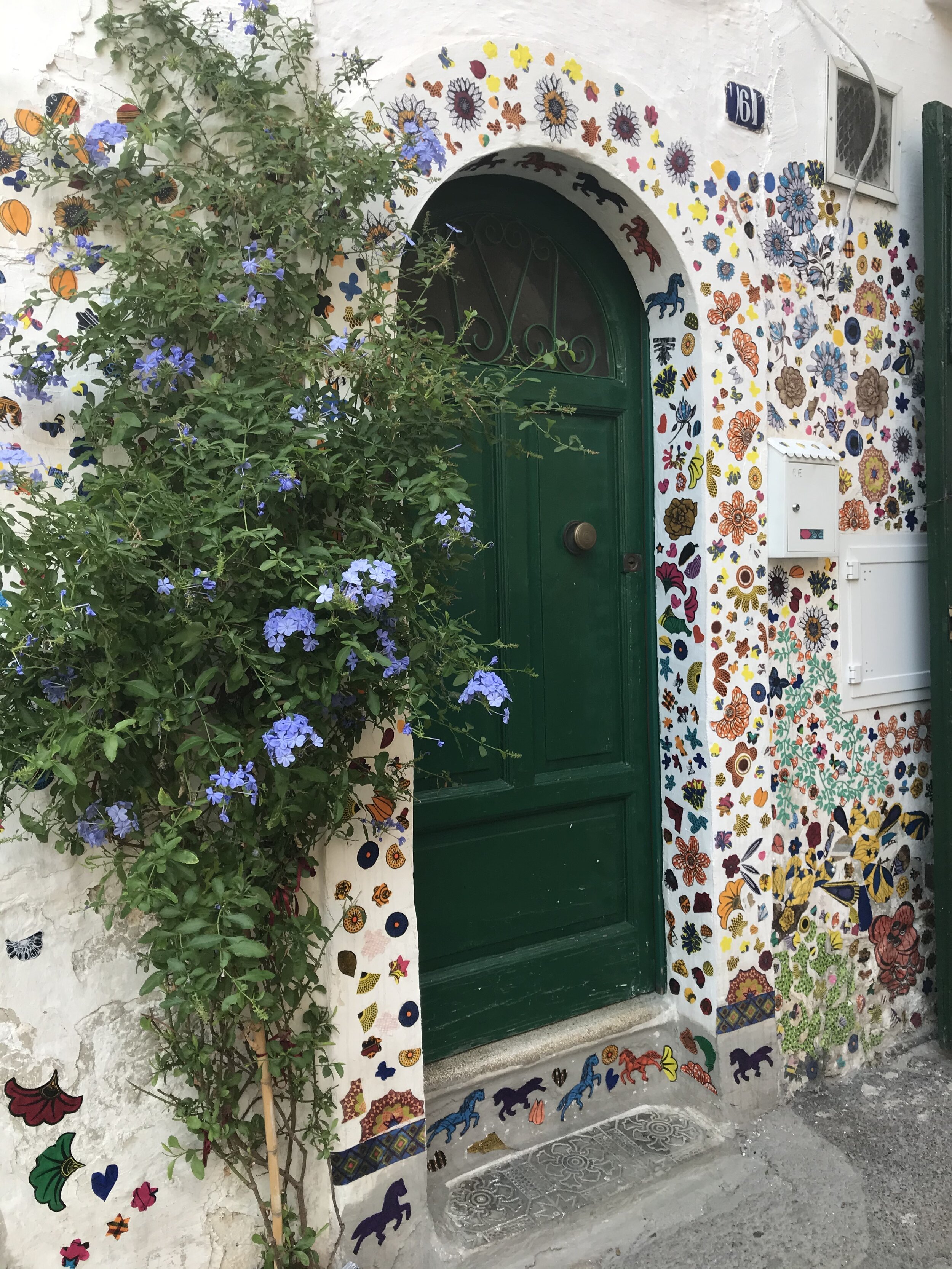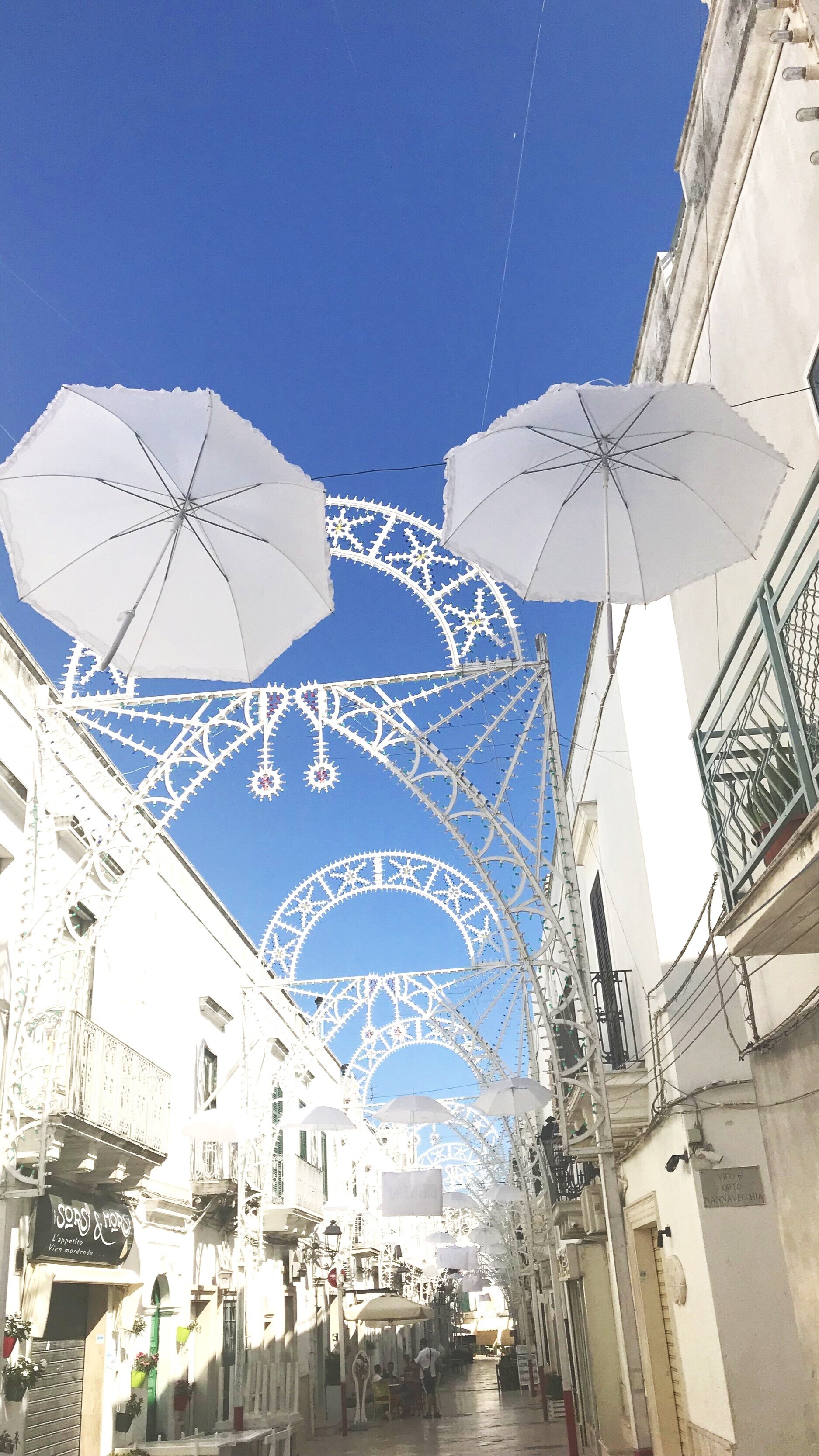I Am Lost
A Short Guide to Finding Your Way Around Puglian Cities
Which way now? Where are we?
Polignano a Mare, Oria, Locorotondo ,Ostuni, Monopoli, Vieste, Ceglie Messapica, Cisternino, Grottaglie?
The white-washed medieval towns of Puglia are dotted everywhere. Well, not quite, but once you’ve lost yourself a few times in the maze, great or small, of narrow streets, rife with dead ends and enticing alleys, they begin to look much the same. In fact, you could be in a number of countries. Not just Italy, but possibly Greece, Spain or even parts of Morocco.
Wherever you are, you have to accept that there is no point in aiming for the fastest route to any one spot in the white cities. If you can’t, then a kind of madness descends, as your sense of direction is mashed by another twist of white and a beckoning glimpse of a piazzetta that somehow disappears as you think you are approaching it.
Ostuni, La Citta Bianca
Old-school paper maps are inadequate at best, and smart-phone maps are worse. Neither are helped by the haphazard attitude locals have to street name signs. This makes me happy. There is nothing for it but to wander haphazardly. Turn left or right? It probably makes little difference in the end. Sooner or later you will hear the noise of traffic heralding the edge of the centro storico, and it’s time to decide whether to emerge into normality, or turn again into the white and shadows.
Grottaglie
It’s the details that distinguish one street from another, the carved faces on the balcony supports, the coat of arms on a peeling wall, a shrine here and another there, graffiti and street art, a bunch of tomatoes hooked on a bar to dry, a staircase coloured with geraniums, a scabby shuttered building, unswept pigeon droppings in an alley that no-one loves.
The copious application of whitewash is, of course, not bound to Puglia and the Mediterranean alone. As paints go, whitewash was always the cheapest option for sprucing up exteriors and interiors alike. The American saying ‘too proud to whitewash, too poor to paint’ echoes across the world. My parents entered into lively discussion when it came to whitewash. The little French cave house we lived in for a third of each year was the canvas in question. I seem to recall that my mother favoured a modern, more durable white paint from the Monsieur Bricolage superstore, whilst my father determined to recover the walls with traditional slaked lime white, straight from the old fashioned quincaillerie (hardware shop) on the main square.
Nowadays the lime-white pulls tourists into the old streets, but there’s a fanciful legend it originated in a desperate desire to repel blood-thirsty invaders. In some long-distant, pre-Rayban era, the dazzling reflected light caused a hot-house version of snow-blindness. It’s true that when my son first visited me in the heat of mid-June, his squinting eyes streamed each time we walked through the glaring bleached streets of Ceglie Messapica. There’s the flaw in the legend. If marauders were blinded by the light, the locals probably were too. Or as King Manfred of Manfredonia (and Sicily) in the north of Puglia so elegantly put it
‘Blinded by the light
Revved up like a deuce
Another runner in the night’
(or was that Manfred Mann? Either way a very long time ago)
A more likely explanation for the belting white is straightforwardly aesthetic. Whitewash harmonised the mish-mash of stone and clay and straw and wood that buildings were constructed with. Dust and dirt could be spotted by every houseproud citizen and swabbed away instantly. With its mildly anti-microbial qualities, lime wash also offered some small degree of protection from rampant disease. And as importantly, the reflective white of the walls added to the cool of the darker interiors in the summer’s mid-day furnace.
King Manfred of Sicily (and Puglia)
White Umbrellas Celebrating Cena Bianca
The relatively new, but now wide-spread, phenomenon of the Cena in Bianca originating in Turin in 2013, has taken hold here too. In Ceglie this year, the white dinner was held in the Belvedere Monterrone. The streets were decorated with white bunting, dancing white umbrellas, and the elegant white attire of the diners themselves. Here in Puglia the whiteness is personal, a celebration of all that is good and honest and true. Cristina Elia, President of the Pro Loco Ceglie Messapica sums it up in the invitation to join the dinner:
“…per omaggiare la nostra splendida città e promuovere il bianco, il colore del nostro borgo medievale, dei trulli, delle antiche masserie, della nostra gastronomia con gustosi prodotti caseari.”
“…to honor our splendid city and promote white, the color of our medieval village, of the trulli, of the ancient fortified farmhouses, of our gastronomy with its delicious products.”
Thank you Cristina, thank you Manfred.
Enjoyed this post? See more posts in Journal, or browse all blog posts.



